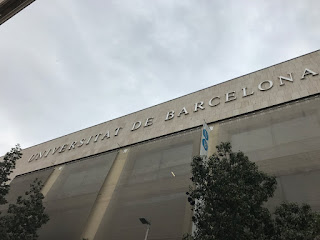In the last twenty or so years there have been ongoing regeneration plans to alter the public spaces of the El Naval area. While the neighborhood is still very similar to the Gothic Quarter, i.e. narrow streets and old buildings, the rejuvenation of the neighborhood has created an interesting juxtaposition between the old and the new. El Raval was home to the many workers from the countryside who moved to Barcelona during the industrial revolution. Another distinctive characteristic of the El Naval area was its proximity to the port. The neighborhood was filled with sailors who had been at sea for months and the are closest to the port had a reputation for its bars, cheap hotels, and many prostitutes. This area became known as "Barrio Chino" although it did not have any Chinese immigrant population.
Much of the area has changed in the last 20 years due to public efforts to clean up and improve the El Naval neighborhood. The biggest transformation being the "Barrio Chino" where the government's rejuvenation plans were mostly based. In the 1980's the area above was widely used by drug dealers and prostitutes as heroin began to become more and more popular. The area became dangerous and home to petty crime, which threatened the area's safety. An example of the government's revitalization techniques can be seen in the park above. All the cheap hostels, restaurants, and abandon buildings were cleared out and restaurant and bar licenses were given to reputable vendors to open up shop. The rest of the square was demolished and replaced with the park that can be seen today, the park is also very close to a children's center. These public initiatives helped improve the quality of the neighborhood and fostered natural gentrification through the creation of public spaces and without the use of new modern expensive buildings.
The El Naval neighborhood is also home to a large artistic and educational community, which is due largely in part to the location of the MACBA (Museu d'Art Contemporani) and the CCCB (Centre de Culture Contemporania de Barcelona) within the neighborhood. The MACBA (seen above) ignited the rejuvenation of the neighborhood as it brought art and design to a central part of the area. The streets have many examples of art as graffiti adorns many shutters and gates of buildings. There are numerous vintage stores, art and design stores, record stores, and skate shops. These stores are all coupled with many new restaurants and bars that serve the diverse population of El Naval. The combination of immigrants, artists, skaters, and overall youth influence has helped create a wonderful atmosphere in the neighborhood.






No comments:
Post a Comment